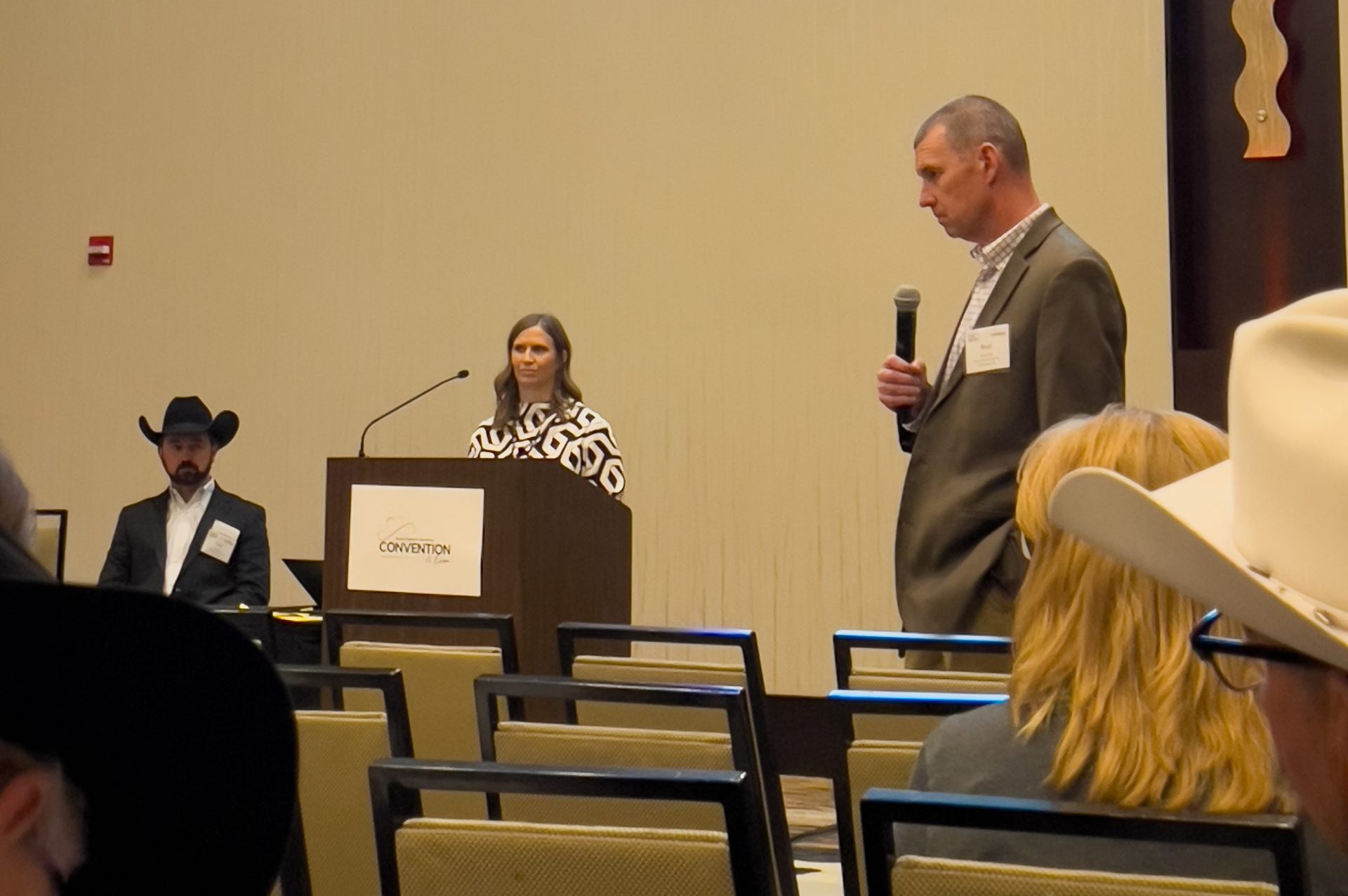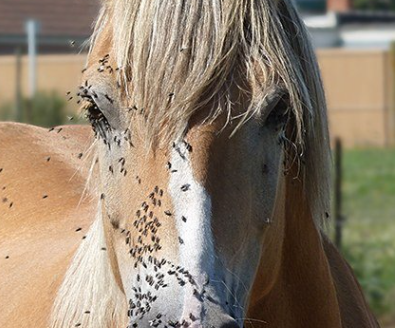Task force works to help alleviate vet shortage in rural Kansas

Rural America often doesn’t have enough medical professionals, and that includes veterinarians.
Dr. Brad White and Kelsey Olson, Kansas Department of Agriculture deputy secretary of agriculture, detailed what the state is doing about that at the Kansas Livestock Association convention during the animal health committee meeting in November 2024.
Kansas put together a Rural Veterinarian Task Force in 2020, and one of the drivers for this committee was questions related to providing service for rural areas.
Those members include groups like the KLA, the Kansas Department of Agriculture, Kansas Farm Bureau and the Livestock Marketing Association, as well as the veterinary school and animal science program at Kansas State University and the Kansas Veterinary Medical Association.
According to Olson, the task force was two-fold. Stemming from the Ag Growth Summit in 2020, the animal health committee identified the need to focus on rural veterinary clinics and rural vet support. She credited K-State for taking the lead.
“We hear on a daily basis what our producers are struggling with,” Olson said. “We then try to quantify that and see if there are things that we can do at the state level to make this a great place to work, a great place for our producers and a great place to simply do business and support our rural communities.”
The task force was developed to promote the retention of excellent veterinarians to ensure “that long-term adequate supply,” Olson said.
Discussions have aided task force members in finding the best solution for all the different stakeholders involved. White said the group began by assessing the level of veterinary service in different areas of Kansas.
“We looked at how many veterinarians were in different parts of the state, and where those veterinarians that were serving livestock producers were,” White said.
Secondly, they surveyed livestock producers, with the help of the cow population overlaid across a map of Kansas.
“We found out that about two-thirds of them felt like there was a shortage of veterinarians,” he said. “So, we took some of that information and said, ‘We need to be sure that we’re adequately producing and managing veterinarians so that they can come into practice and provide the services that are needed.’”
Prior to the creation of the task force, the Kansas legislature had authorized some funding to support veterinary students at K-State’s vet school and offset some of their costs.
“We looked at the deficiency between what the state was doing for our veterinarians as compared what they were doing for our medical students, who they were incentivizing to go into our rural communities, and there’s really a big disparity there,” Olson said.
Only about five students were being supported through the program at the vet school, but in 2022 the legislature expanded the program, Olson said. Seven students are now taking advantage of it.
White said with the changes to the program, students get a loan of $25,000 per year as they go through veterinary school. Students get credit toward repaying the loan for every year they work as a veterinarian in Kansas after graduating. The program is modeled after medical school loan incentivization programs.
Since 2006, more than 90 students enrolled in the program. Most of them have fulfilled their requirements of four years of service after graduation to repay their loans.
“Only about 30% to 40% of the human medical doctors fulfill their obligation to go into rural areas,” White said, even though that program provides more loan funding. “The exciting part about this, from our standpoint, is we’re looking at long term success.”
The success rate in Kansas is much higher than nationally for those vets who stay in rural areas.
“Four out of five of those recipients of this program are still practicing in rural Kansas,” he said. “We have half of those practitioners that are still practicing at the practice that they started at. We feel like it’s been a very successful program.”
Students self-select where they’re going, and he believes this contributes to the success and longevity of the program.
Training is important for veterinary students, and the task force wants to ensure graduating students have the necessary skills to be able to practice veterinary medicine on the food animal side.
“We started a food animal veterinary certificate program, which allows veterinary students to select food animal classes specifically,” he said. “If we look nationally, what we see is about 10 to 12% of students who graduate from veterinary school will go into some type of food animal medicine. If we look at K State, we’ve seen about 30% of our class the last several years will go into food animal medicine.”
K-State has 132 students enrolled in the veterinary certificate program, and there has been a lot of interest and extra effort for those going into food animal medicine.
“We believe that some of that training will benefit them as they get into practice,” White said. “They can start to build success as they move forward.”
At K-State, vet students perform a cesarean section on a cow during their junior year, one of few programs that allow this.
“They will do palpation multiple times in multiple classes, as well as work on some of the business aspects in different elective courses,” he said. “There’s a bull breeding soundness course. There’s a cow-calf course. There’s a feed lot course. The students get a lot of exposure to food animal medicine as they go through those courses.”
Task force surveys asking what skills vet students need to have when they graduate drove much of the curriculum.
Kansas is not alone in trying to identify how to support rural practitioners. It is one of three states in a pilot program assessing state veterinary readiness that was rolled out in 2024.
“They are doing an assessment of what is the state currently doing? What’s the landscape look like? What shortages exist? Whether a state has a vet school?” Olson said. “Of course, obviously, we know Kansas does, but they’re compiling all that information to try to map out potential ways that a state can move forward to position themselves to be better prepared.”
An assessment is anticipated to be out this month that considers how states are training vets in anticipation of a shortage caused by ones who are retiring and aging out of actively practicing veterinary medicine.
The work is important, White said, and he hopes it will helpidentify solutions for both rural communities and individual producers.
“We understand there’s a need, and we’ve been working for several years to continue to try to assess, define that need and come up with potential solutions,” he said.
Kylene Scott can be reached at 620-227-1804 or [email protected].



